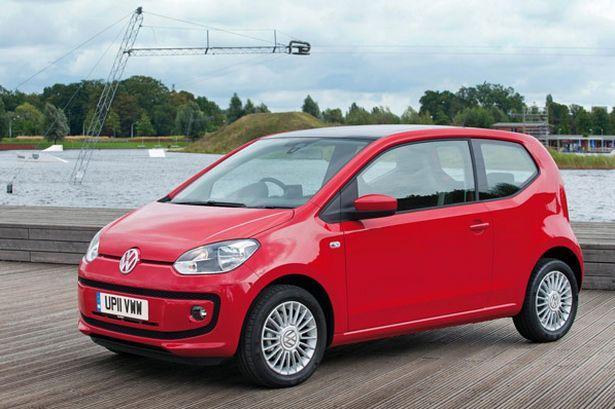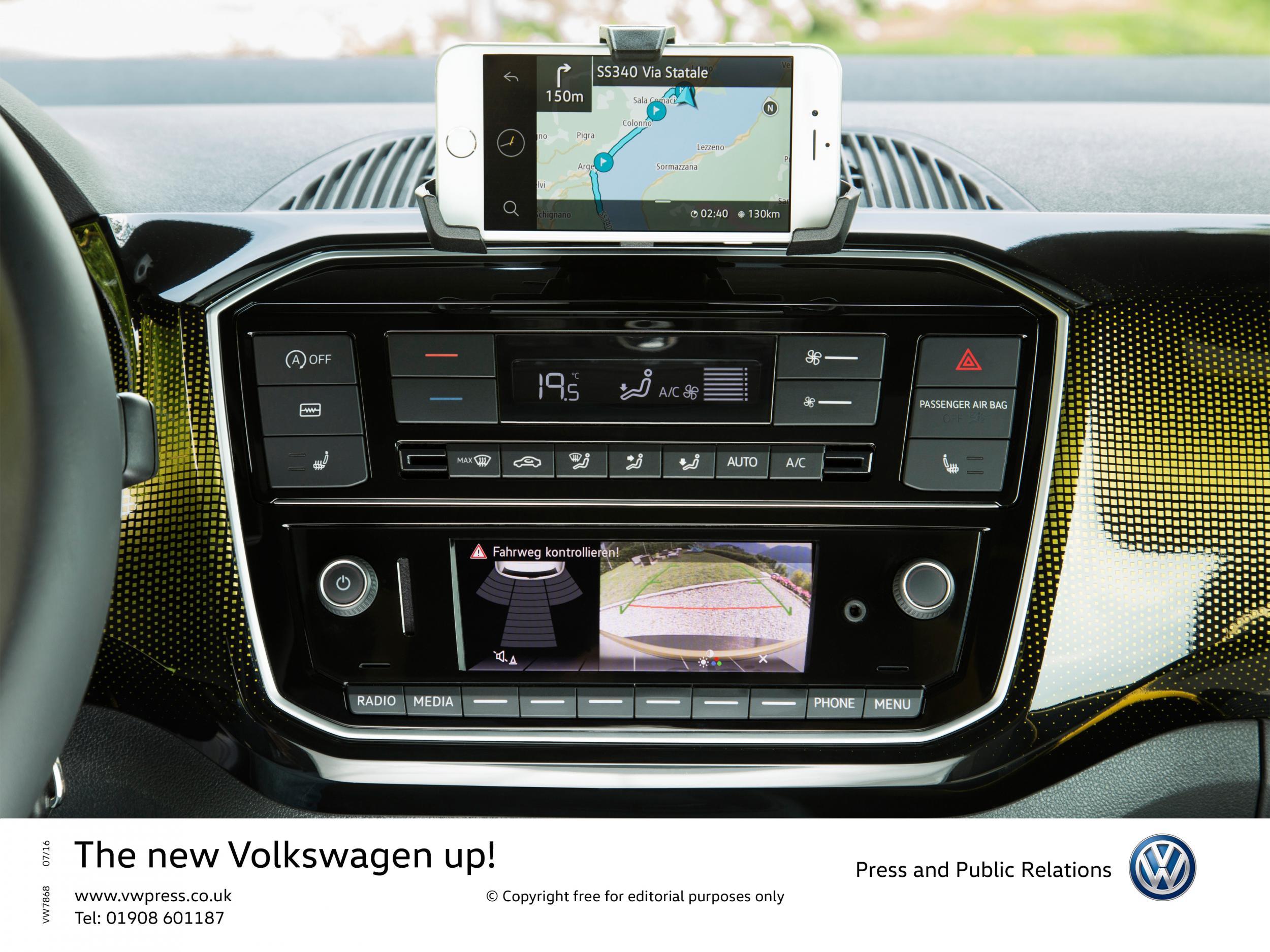Car Review: VW High up! 1.0 TSI 90

This, for me, is a record. I’ve driven three three-cylinder cars in three weeks. The future – cubed. To re-cap, I have already tested the Kia c’eed Sportswagon and the new Citroen C3 Flair, both of which had the trendy new style of engine, and both of which acquitted themselves well, and now, maybe a little overdue, VW has arrived. It’s fitted its established town car, the up!, with the latest in three-cylinder technology. Does it work?
It certainly does, and it is impressive to see how the world’s automotive engineers are rising to the challenge of making the petrol engine an ever-more perfect piece of kit. Even after 130 years, they’re still pushing it and, as we see, sensibly turning their attentions away from trying to make the inherently inferior diesel design mimic the advantages and strengths of petrol (especially when it comes to emissions – as we all know by now).
Of course, the three-cylinder revolution could be just another great car con, but I hope not, and there are reasons to think it would not be. The three-cylinder unit is just that, replacing the small capacity four-cylinder engines that used to be the rule. The cylinders, by the way, being the tubes that the pistons go up and down in, turning a crankshaft that, via the gears, drives the wheels. The three-cylinder has inherent advantages from a corporate and consumer point of view. It is, being one “pot” short of the four, smaller, lighter and cheaper to make than an equivalent four-cylinder engine, and it will deliver more compact proportions and superior fuel economy. Coupled with suitable electronic engine management and turbocharging, it will have all the power needed, though it can require a little more revving and work through the gearbox to get the best form it.

The inherent drawbacks of the three-cylinder engine, like any odd-numbered cylinder configuration, is that they aren’t as well balanced through the combustion cycle as their evenly balanced counterparts. That gives them a relatively unsophisticated “thrum” sound, vaguely reminiscent of an old Citroen 2CV, if you’ve ever enjoyed the signature tune of that classic power plant (all of two cylinders, and 654cc as I remember it).
The VW proves the point here, the maximum torque arriving at a relatively enthusiastic 5,000 rpm, but rewarding you with perfectly acceptable acceleration (being a small car it feels faster than it is) and impressive fuel consumption. They call it the “High” up! Even though it’s only the second-highest trim level, and I’ll resist the temptation to make some lame joke about the northern English vernacular or ecky thump or something.
The spec
Price: £11,400
Engine capacity: 3 litre 1-litre petrol
Power output (PS @ rpm): 90@5,000
Top speed (mph): 114
0-62 mph (seconds): 9.9
Fuel economy (mpg): 60.1
CO2 emissions (g/km): 108
The new engine is an excellent complement to the up! and I found it a pretty impressive drive over some quite long distances on A roads and motorways.
I also enjoyed being able to punt it round London, the up! being just able to poke through some of the remaining gaps in the capital’s congested-all-hours roads. It isn’t as useful for doing that as, say, a classic Mini but, by the bloated car standards of the twenty-first century, it’s about as good as it gets on four wheels. No sat nav, though; all you get is a cradle for your smart phone. A little disappointing.
The one thing that I have never been able to accept about the VW up! Is actually one of its best features (in three door form): the extreme width of the front doors. These offer excellent access to the adequate rear compartment, but I just wonder how long it will be before they start to sag on their hinges. The rear door is more of an opening window, with a shallow space for shopping or an overnight bag – and about all the space most people ever need.
As ever, with the up!, you might also wish to consider the slightly better value Seat Mii, which is the same car with a different badge, and ditto the Skoda Citigo, all from the Volkswagen Group and all made in Slovakia, as it happens. So that’s the three VW Group three-door hatches with the three-cylinder engines available in three states of trim, and probably best suited to carrying three people around. What a magic number three is.
Join our commenting forum
Join thought-provoking conversations, follow other Independent readers and see their replies
Comments
Bookmark popover
Removed from bookmarks